|
Euronaval 2012, the 23rd in series, was held held 22nd to 26th October, and broke previous records in
participation. Twelve chiefs including Admiral Katsutoshi Kawano, the Commander-in-Chief of Japanese Self
-Defense Fleet (JSDF) – for the first time – and and Russia’s Admiral Viktor Cherkov, Malaysia’s Vice
Admiral Tan Sri Abdul Aziz Jafaar and Hellenic Navy Chief Vice Admiral Kosmas Christidis attended.
In his 2012 State of the Union Speech, the President of the European Commission Josse Manuel Barroso made
a strong case for a new direction and a new thinking for Europe and significantly said, “The Sea is an
opportunity for Europe to strengthen its position in the world.” That observation indeed set the stage for
the French and other European countries’ perspective for dealing with maritime nations.
The exhibition was opened by the Defence Minister of France Jean-Yes Le Drian and he prefaced his speech
with, “I do not have to remind you how important the sea is to our country.”
France has riparian sovereign assets worldwide and in the Indian Ocean with the Reunion islands. Besides
strategic access and requirements, French companies are readying to mine minerals from under the sea with
specialized platforms built by Technip.
Maritime nations, including India can take a leaf from his words as the refrain is, that in the future,
resources will have to be harvested from the seas by vessels with marine mining tools to extract nodules
and food from the deep, and these deep diving and well equipped platforms are under construction
predominantly in USA, France and in China.
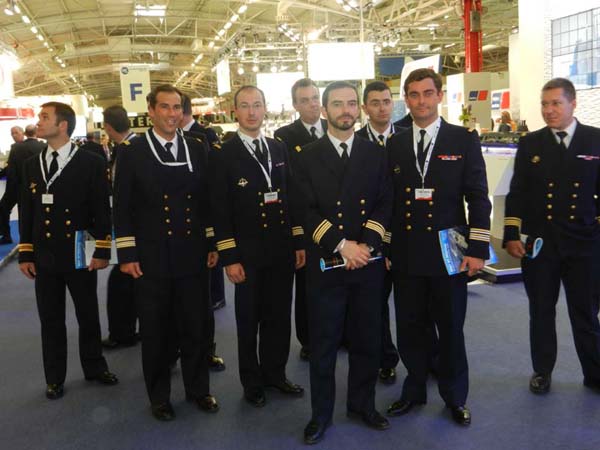
The French Minister’s statement was emphasized by the French navy Chief Admiral Bernard Rogel, who linked
maritimization in the 21st century to globalization.
The 14,500 sq mtrs of exhibition space and a dynamic demonstration area for the fast selling UAVs were taken
up by 371 exhibitors from 33 countries.
The French Ministry of Defence and GICAN, the organizers, laid out the red carpet for 80 foreign delegations
with on site dining and meeting facilities.
France today is the third largest exporter of defence wares. Its Rafale International, a grouping of Dassault,
Thales and Safran, are finalizing contract for selling 126-plus Rafale combat jets to India while the Paris-
based DCNS is building six Scorpene submarines for the Indian Navy.
Despite India being a large importer and buyer of naval ships, weapons, UAVs and other systems, India’s Ministry
of Defence (MOD) however did not depute any representation, and the absence of the world’s top defence importer
was noticed.
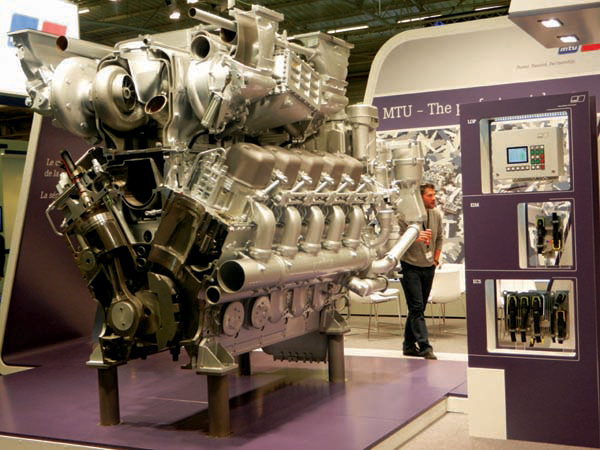
Notably, predictions are that over the next 20 years, various countries would need 226 frigates and destroyers,
445 OPVs and corvettes and over 200 amphibious ships as well as submarines. Jane’s predicts that over the next
five years core defence spending will rise 20 % from USD 40 bill to USD 50 bill for India; and from USD32.7 bill
in 2012 to USD42.3 billion for SE Asia.
The Indian Navy’s order book for the next decade is 44 ships which include two aircraft carriers and six submarines,
and over 150 aircraft (45 MiG-29Ks, 17 BAE Hawks, and 8 P8i 737 Boeings) and helicopters worth around Rs 92,000 crores.
The Navy has received Acceptance of Necessity (AON) for 40 more platforms.
China has an unprecedented large naval ship building programme and Brazil and Russia are planning bigger navies with
accent on nuclear submarines.
Defence sales to China are not permitted and sanctioned by EU. However China buys equivalent non-defence technologies
and ingeniously converts these to military uses.
A good example quoted at Euronaval was how China bought the tri-maran design of a private luxury swath technology boat
from Australia’s INCAT, a shipbuilder and designer from Tasmania and converted it in to the impressive high speed Hobbei
missile boats. China also specializes in reverse engineering and copying designs and has developed manufacturing skills.
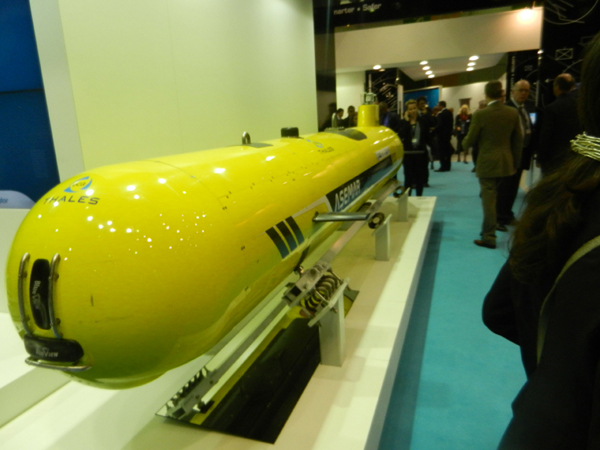
Two Indian companies, BrahMos Aerospace Ltd and MKU, the Kanpur based armour protection materials supplier with factories
in Germany took up stalls at Euronaval.
BrahMos announced the successful firing of a vertical launch BrahMos missile from the latest Yantar built Krivack INS Teg
off Goa in early October. The target ship INS Vindhygiri hull was sunk.
Dr Sivathanu Pillai, CMD BrahMos, stated that the air launched lighter and shorter BrahMos missile, weighing approximating
2.3 tons, would be shortly tested in Russia from a modified SU-30. It is reported that all control vehicles are built in India
and except the seeker and engine all other components are made in India.
As hosts, the French Defense Procurement Agency (DGA - Direction Générale de L’armement) and the French defence industry had
the most prominent pavilion of French companies led by DCNS, Safran group (Sagem, Turbomeca and Snecma), Thales and MBDA.
These French naval majors are all doing business with India which includes the DCNS Project 75 Scorpenes being built at Mazagon
Dock Ltd (MDL) worth $ 5.3 bill with Thales Subtics systems and Sagem periscopes and inertial navigation systems (INS). MBDA will
supply the SM-39 Exocet torpedoes.
DCNS is also aiding Garden Reach Shipbuilders and Engineers (GRSE) for the raft mounted engine platforms (REMP) for the four
Project 28 ASW corvettes, and has a collaboration with Walchandnagar Industries Ltd.
For the first time, DCNS displayed an export version of its FREMM Multi-mission Frigate with latest weapons, which includes the
Aster AA missile system, Terma Scanter 2001 and Héraklès radars, Sagem Najir fire control system for the 76mm gun and the 1000 km
SCALP cruise missile and the organic ASW NH-90 which is shortlisted for the IN along with the Sirkosky SH-60 Sea Hawk.
DCNS also showcased its Gowind Corvette L’Adroit model which operates the Schibel UAV. The design is short listed by Malaysia.
The L’Adroit has proved itself as a cheaper offshore patrol vessel to be employed in anti-piracy operations, than the large
destroyers and frigates whose operating costs are hurting nations.
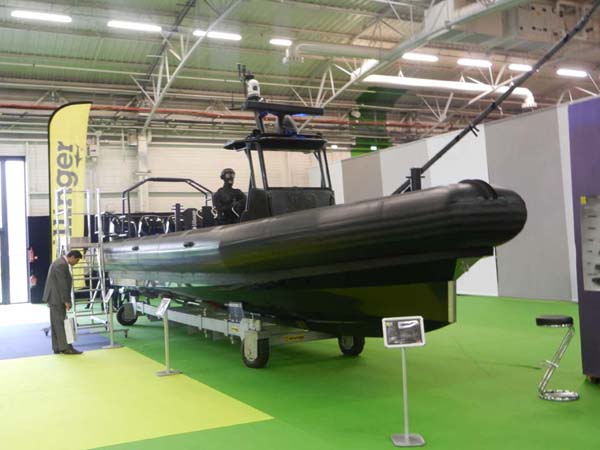
France’s Nereides displayed the buoyant towed antennae system that Indian submarines are being equipped with for very low frequency
(VLF) reception and transmissions when submerged. India’s VLF transmission tower at INS Kattabomman near Tirunelveli is being upgraded
by Continental Electronics of USA and Larsen and Toubro to communicate with submerged submarines, a dire need when India operationlises
its nuclear deterrent from the seas on INS Arihant and the follow on submarines.
A new showing at Euronaval was surface and undersea unmanned vehicles (UUVs) for survey, intelligence and to counter the threat of
naval mines, and mines were on display by RWM Italia of Rheinmetall which has supplied to India.
Konsberg of Norway displayed the Penguin and NSM naval missile for helicopters and its family of (Underwater Unmanned Vehicles) UUVs.
The Indian Navy has ordered 12 Konsberg Huggin -1000 UUVs for its six 500 ton catamaran survey ships being built at Alcock Ashdown
in Gujarat. The lead ship INS Makkar, with 2 UUVs and a host of latest echo sounders and magnetometers for survey, has been operating
off Mumbai.
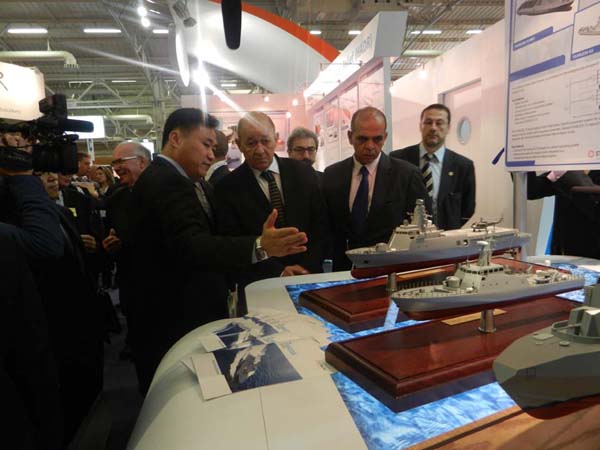
The Indian Navy will also operate mine disposal UUVs on MCMs built by Kangam at Busan in South Korean. Two glass reinforced plastic
(GRP) MCMs will be built in Korea and six at Goa Shipyard.
German shipyards Blohm & Voss, Lurssen and Fassmer and other companies were under one pavilion with the large EADS pavilion nearby
which hosted Eurocopter’s extensive range of helicopters for naval and maritime missions and displayed the NH90 NFH which is short
listed for the Indian Navy, alongside the AS365 N3+ and the AS565 MB/Panther. RENK AG a leading gear box manufacturer which has
supplied the gear boxes for the Naval OPVs (NOPV) at Goa Shipyard Ltd.
The first of four NOPVs has cleared all trials and awaits commissioning as soon as a crew is appointed. Atlas Elektronik, the
supplier for maritime high technology, which has upgraded the IN’s HDW-1500 submarines with fire controls and Carl Weiss periscopes
showcased its wide spectrum of products, innovations and capabilities and displayed the Sea Spider and a Sea Hake torpedo models for
the Indian market.
The Indian Navy has meanwhile shortlisted Blackshark torpedoes made by Italian Finmeccanica’s Whitehead Alenia Sistemi Subacquei
(WASS) for the six Scorpenes under construction at MDL.
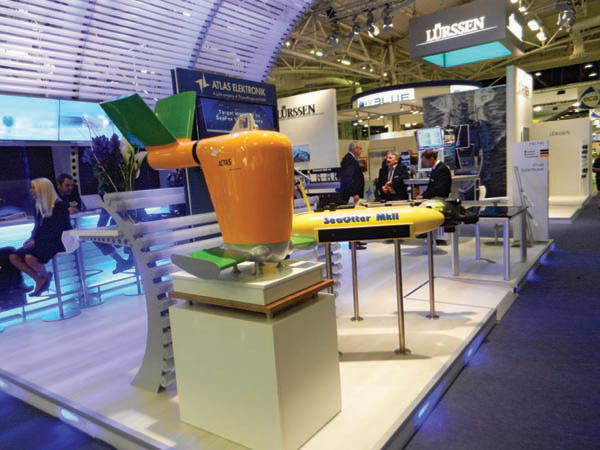
In a new innovative manner of construction, Russia has ordered two 21,000 ton Mistral Landing Dock Platform Dock (LPD) ships on
DCNS for around USD 1.5 bill and DCNS has subcontracted the construction to the STX yard near Lorient. Most of the will be French
built and the rest Russian.
The two ships will be outfitted in Russia and Admiral Vysali Lyshoak stated the ships will be based with the Pacific Fleet from
2014. The Russian pavilion was impressive and pride of place was given to Severnoye Design Bureau Project 11356 Krivacks, which India
is acquiring.
For the first time, GE Marine’s subsidiary GE-Energy Power Conversion displayed its hybrid and all electric propulsion systems for
military and commercial ships which is already on the Type 45 of UK and DDX Zumwalt class of USA and planned for the Tide class Royal
Navy Military Afloat Reach and Sustainability (MARS) replenishment ship which is to be built by Daewoo Shipbuilding of Korea as per a
BMT (UK) design.
Rolls Royce, which has taken over part of MTU was at the show and displayed full range of full size engines. The Indian Navy employs
its Kamewa water jets on its fast attack craft.
MJB, another Swedish firm which has taken over Ultra Water Jets was at Euronaval and it is supplying water jets for the 36 Fast
Patrol interceptors being built by Larsen & Toubro for the Indian Coast Guard with an option for 18 more. The MJP water jet is powered
by an engine from Caterpillar, which also displayed at Euronaval and indicated the first Interceptor has carried out trials off Hazira
and will commission soon.
Hamilton from New Zealand has supplied water jets for Navy’s Fast Attack Craft (FACs) constructed at GRSE.
Chemring Countermeasures Ltd from UK demonstrated their Centurion chaff launcher at Euronaval and stated it lost the competition to
supply chaff for DRDO produced Kavach launchers to Wallops.
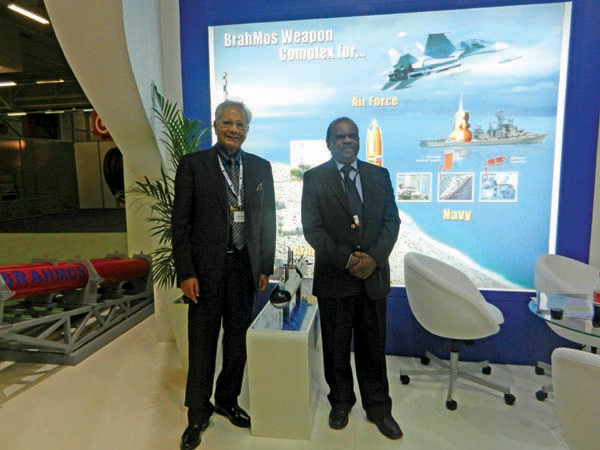
Denmark’s TERMA exhibited the C-Series naval solutions and remotely operated Scanter radars with electro-optical systems installed
for the Indian Coast Guard coastal security chain along with SAAB/BEL Automated Identification System (AIS) executed by Elcome Marine
Services, an Indian-owned company with big presence in the Gulf also.
Infomatively, Defence Minister AK Antony has already inaugurated the remotely operated radars in Maharashtra and Kerala and pictures
from the network are displayed at Coast Guard’s Maritime Reporting Centers (MRCC).
Israeli companies were welcoming Indian visitors..
ELTA displayed its range of radars and the MF-STAR (EL/M-2248), a multi-function four faced solid-state active Sierra band ASEA conformal
phased array radar system which is on the Type 15A destroyers being built at MDL. The first INS Kolkatta is preparing for commissioning.
Rafael Advanced Defence Systems, which is collaborator for Barak-NG/LR with DRDO for India’s medium range and long range SAMs for the
Indian Navy and Air Force was at the show. Rafael displayed its range of weapons, including a full sized interesting unmanned surface
vehicle (USV) –Protector – which has reportedly been ordered by Singapore.
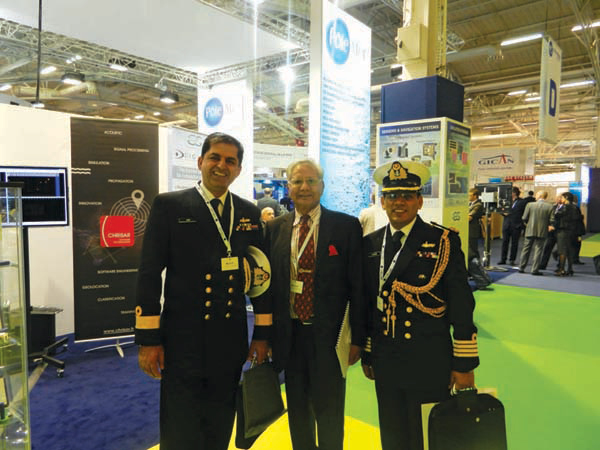
Israel’s Iron Dome anti ballistic missile system model drew a lot of interest. Israel has steadily been modifying its Arrow radars and
anti-missile missile capability due to the ever-present possibility of threats from neighbourhood.
Italy with its lead company Finmeccanica had an impressive pavilion with Selex, ship builder Fincantieri which has supplied the tankers
INS Deepak and Shakti, and WASS which provides underwater towed systems and the Blackshark torpedoes, Super A-244S torpedoes and has a
collboratrion with Bharat Dynamics Ltd (BDL).
The organizers of Euronaval, GICAN turned the spotlight on ‘Sea is the Future, and Innovation’, and set up a SME’s centre for visitors
to exclusively deal with small and medium enterprises for B2B meetings.

CONFERENCES AT EURONAVAL
To further look into the ‘Future at Sea’ two very interesting 90 minute, open to all, VIP-addressed conferences were arranged.
On Oct 23rd, French CNS Admiral Bernard Rogel and Brazilian CNS Admiral Julio Soares de Moura Neto jointly addressed the subject,
“Navies, an Operational Force Even in Peacetime” with Radio France’s Jose-Manuel Lamarque as moderator. France has bagged a large
contract from Brazil for naval collaboration programmes to assist and design and build OPVs and nuclear and conventional Scorpene
family of submarines and more ships are under consideration.
Both Admirals spoke on how more nations will depend on the seas for resources in peace and get engaged in humanitarian relief and
acts like piracy and so will have to build navies and Admiral Rogel called it, ‘Maritimization in the 21st Century’.
Admiral Moura Neto unveiled Brazil’s nuclear submarine plans and the new base coming up near Rio de Janerio.
On Oct 24th, there was another lively conference on Securing the Seas. Speakers included Patrick Bossier, Chairman DCNS, Alberto
Maestrini CEO Fincantieri, Jean-Pascal Biaggi of Technip which specializes in subsea vehicles, Jean-Georges Malcor CEO CGG Veritas,
the French classification society, and Phillipe Louis-Dreyfus CEO of the ship owning company of that name.
The session was moderated by Michel Foucher Director Studies at the famous Institute of Higher National Defence Studies (IHEDN).
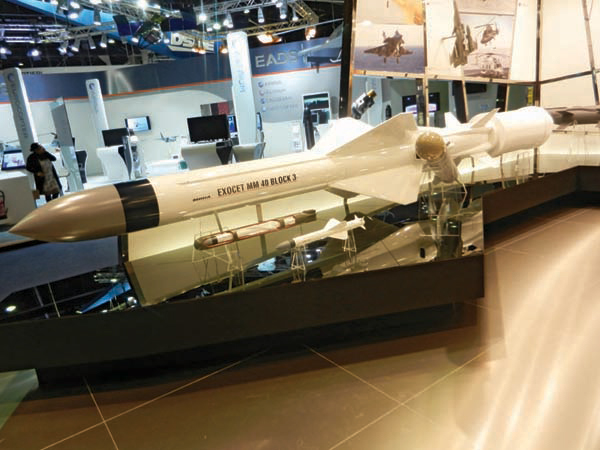
DCNS’s Bossier charted the future forcefully with statistics and stressed that land resources are becoming scarce and world
consumption and population is rising and transport and production costs and security are factors that will come to the fore with
a resource crunch on land.
Hence he opined that geo-economic and geo-political considerations will make the world change, and the seas – which could include
the Arctic and Antarctic – will gain more importance, and that might lead to disputes.
Fincantieri CEO Maestrini quoted many statements
by Robert Gates, Barroso and Hillary Clinton who
have asked Europe not to neglect security and
not reduce defense budgets, and said, “Europe
risks giving up defense of Europe”.
|